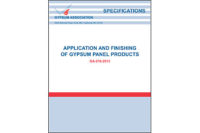As we pass one year of living in the “new normal” of a global pandemic, the construction industry—and the specialty trade sector in particular—has navigated the unprecedented year and resulting economic impacts with an unmatched level of resiliency. We saw offices moving to the home, projects delayed and cancelled, new government working regulations and so much more. But one undeniable result of the pandemic has been a drastic increase in implementation of new technology and new practices in our industry—something that’s been sorely needed for some time now.
As many around the world quickly turned to working in new ways with Zoom, turning our living rooms into movie theaters with Netflix and even took our chess games to a whole new level, the construction industry has been rapidly adopting new ways of working—most revolving around technology. And the biggest step being made on that front? Moving to the cloud.
By moving our work to the cloud, we’re able to collaborate more effectively, keep lines of communication open and approach our work with much more confidence. Here are four trends we’re seeing helping wall and ceiling professionals increase their accuracy, reduce risk and rework, and stay more connected and up to date than ever before.
Moving Documentation to the Cloud
We’ve all probably been there: you finish putting up a wall, but because of improper documentation, an inspector is forced to tear that wall down to inspect something behind that wall—meaning you have to pay to redo that wall yet again.
One of the biggest contributors to costly rework like this is improper documentation and progress tracking. As mentioned above, bringing our documentation to cloud-based solutions allows teams to break down information silos, ensure everyone is working from the most up-to-date information sets, and increase collaboration around projects to make sure any changes are easily captured and communicated to the team. Creating this “single source of truth” reduces the risk of having multiple document versions and outdated information floating around, which can ultimately lead to rework.
Bringing Progress Tracking Into the 21st Century
In that same example of an inspector tragically having to tear down a wall you and your team spent time and money putting up, effective progress tracking would have also come in handy. In the same way that moving documentation to the cloud is beneficial, bringing progress tracking to that single source of truth and making it accessible is paying major dividends for wall and ceiling professionals.
Progress tracking is the only way to know if you’re meeting your schedules and budgets, but has historically been a very analog, offline and “old-school” experience—creating data silos in separate systems, disjointed communications and ultimately failing to unify tracking of the entire project.
Establishing a single source of truth and investing in your workflow, task, schedule and field productivity tracking helps you not only connect the dots throughout the lifecycle of your projects, but also allows teams to easily report updates and ensure all their bases have been covered, which can reduce liability and risk of having to pay for that costly rework.
Creating a Digital Link Between the Office and the Field
In a similar vein of properly tracking progress, all-too-often we see contractors operating in a very manual process for communicating between the field and the office. But this is much more than simply communicating via email, text or voice – creating this digital link allows contractors in the field to quickly access the most up to date drawings, models, punch lists and more, all from that single source of truth. Being able to quickly upload photos to the cloud also allows teams in the field to quickly and accurately report progress and issues in real-time, and acts as a log of activity and source of record for any given project.
Centralizing and Streamlining the Bidding Process
Data silos, extra backend work and disjointed communication have long hampered the bidding process. Specialty contractor bidding—particularly with wall and ceiling fabrication and installation—is notoriously competitive, which is why bringing your bidding process out from spreadsheets and Word Docs is more important than ever before.
Utilizing systems that allow you to easily discover new projects to bid on, access previous bids and easily collaborate on new bids are key to setting your business up for success in 2021 and onward. As more projects begin to come back online, your team needs to be able to act quickly and, most importantly, accurately, to ensure you’re able to discover and win more bids—and make sure you’re delivering on the bids that you’ve won.
We’ve witnessed a digital transformation in our industry over the past year, and I fully expect that transformation to continue at an exponential rate. Incorporating the right technology is increasingly becoming contractor’s ace in the hole for increasing collaboration, decreasing rework and ensuring a higher level of success on our projects.









